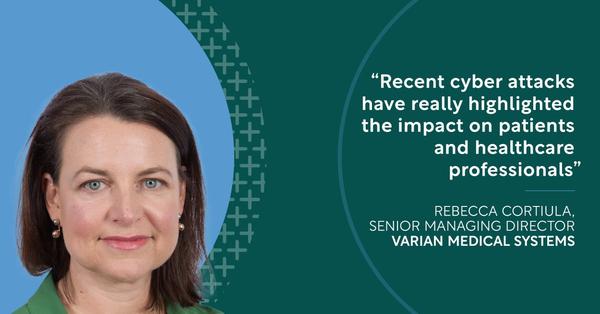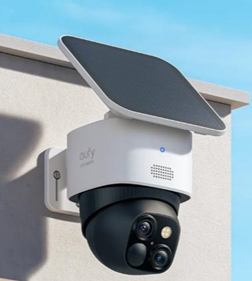The first human heart transplant took place in 1967 and paved the way for transplantation surgery. The procedure, if not now commonplace, saves the lives of at least 5,000 people per year. The development of modern forms of surgery, including laser, computer assisted and robotic surgery, have had significant positive impacts on medical outcomes and are saving the lives of patients every day, while significant orthopaedic procedures such as hip, knee and ankle replacements, are regularly improving the lives of patients after surgery.
The developments in surgery over the last 50 years have been astonishing. Robotic surgery has enabled doctors to perform complex procedures using enhanced techniques. These deliver more precise and flexible methods than were previously possible. Not only does this result in less invasive surgery, but it ideally ensures that patients require shorter recovery time and leaves much less scarring than would have otherwise been the case.
This has prompted new thinking across the entire process of surgery – from preoperative interactions with patients to postsurgical outcomes. New approaches are emerging, leading to more efficient medical processes and innovative technologies that can enhance recovery, allowing for faster healing and subsequent improved quality of life.
Rest was long considered the primary positive medicine. Patients would often be encouraged to remain still in bed until bodily functions were visibly recovering. However, this approach can result in prolonged pain and immobility for patients leading to increased risk of blood clots, known as venous thromboembolism (VTE). Around 55 – 60% of all VTE cases occur during or following hospitalisation, resulting in approximately 25,000 deaths in England each year.
Prolonged stays in hospital can also increase the risk of infection. According to the World Health Organisation, healthcare associated infections are the most frequent adverse event in healthcare delivery worldwide: 10% of patients in developing countries and 7% in developed countries will acquire at least one healthcare associated infection during their time in hospital.
Medical professionals are now looking to new solutions in recovery that will help reduce these risks and improve post-surgical outcomes, known as: enhanced recovery after surgery (ERAS). This new pathway for patient care emerged from study groups during the early 2000s that challenged traditional approaches.
ERAS protocols are care pathways intended to help patients recover sooner after surgery. The key elements include preoperative counselling, optimisation of nutrition, standardised analgesic and anaesthetic regimens, and early mobilisation post-surgery. The notion of ERAS stems from the belief that more effective preparation of patients pre-surgery and faster development to mobility after surgery will help avoid some of the complications associated with post operative recovery.
ERAS protocols involve four distinct areas:
Pre-operative: clinicians aim to optimise the wellbeing and medical condition of patients and set realistic expectations through pre-operative education and counselling.
Intra-operative: by using atraumatic and minimally invasive surgical techniques, alongside shortened surgical times and optimised anaesthesia – usually involving lighter sedation.
Post-operative: this includes physiotherapy intervention and promotion of walking as soon as possible alongside regular and effective pain medicine that avoids opiates where possible. Patients are encouraged to re-introduce normal feeding and hydration quickly and drips and catheters are removed earlier. Patients are encouraged to act independently with regards to washing, dressing and socialisation.
Discharge: patients are discharged home with clear instructions on how to progress rehabilitation independently.
The principles of the pathways are used in a range of procedures including general, visceral, vascular and thoracic surgery, as well as orthopaedic, urological and gynaecological operations.
The Royal Bournemouth Hospital is an NHS district general hospital based in Dorset. In 2007, it set up new protocols for its orthopaedic patients visiting for knee and hip replacements to reduce the average length of stay in hospital and enhance the quality of care provided.
By standardising care procedures across the entire process, the hospital reduced the time patients spent in hospital from patients staying an average stay of almost eight days to most patients leaving hospital on either the third or fourth day after the operation. This in turn enabled the hospital to carry out many more procedures than would have otherwise been possible.
The positive outcomes of ERAS are only fully maximised if patients who are discharged are not then readmitted in the future. Matthew Kelly et al published a paper on the reasons for readmissions and emergency visits in patients that had received a Total Joint Arthroplasty (TJA) in the United States.
Using the Kaiser Permanente Total Joint Replacement Registry, the Kelly study looked for patients that had at least one 90-day postoperative emergency visit or readmission for any reason post discharge. 2,344 total hips and 5,520 total knees were analysed, and the results show that swelling, related to these procedures, was the most frequent reason for 90-day emergency visits, with readmissions most commonly due to infection. One in ten patients made an emergency visit during the first 90 days post-surgery.

“We carry out more than 800 joint replacement surgeries and 200 foot and ankle surgeries annually. Critical to improving patient outcomes and controlling costs is identifying and mitigating preventable causes of unplanned emergency department visits and readmissions,” said Dr Asit Shah, MD, Chief of Orthopaedics at Englewood Hospital in New Jersey. “We have long since recognised that swelling, related to these procedures, is the most frequent reason. Oedema can also reduce functional performance while oedema-related surgical site infection can also slow the speed of recovery.”
There are many different protocols for addressing oedema in post operative TJA patients, including cryotherapy, graduated compression stockings, pressure bandaging, continuous passive motion, pneumatic compression devices, and manual lymph drainage. However, many of these procedures are not suitable to recuperation outside the hospital environment and if the objective of ERAS is to safely enable post operative recovery in the home, this can be problematic.
Recently healthcare professionals have started to trial an alternative: the geko™ device. The geko™ device is battery powered, disposable, neuromuscular electro-stimulation therapy that is applied non-invasively to the skin over the common peroneal nerve at the side of the knee. It gently stimulates the nerve, once every second, activating the calf and foot muscle pumps resulting in increased blood flow in the deep veins of the calf, at rate equal to 60% of walking without the patient having to move. It is clinically proven to treat and prevent post-operative and trauma-based oedema.
The Al Hikma Modern Hospital in Jordan is using the geko™ device to address post-operative swelling in lower limb patients as well as deploying the device for trauma-based treatment of swelling.
“My team were keen to explore the geko™ device use as an alternative mechanical intervention to enhance recovery in post operative and trauma-based applications”, said Dr Sameih Ismail Abu Khaleifa, Consultant Orthopedic Surgeon, on the benefits of the geko™. “The device is now in routine use providing safe and well-tolerated oedema control, ensuring that all our patients can now receive appropriate oedema management for better clinical outcomes - and importantly improved patient satisfaction.”
Because the device is relatively small (the size of a wristwatch), simple to apply (to the leg below the knee with an adhesive pad) and battery powered, the geko™ device can additionally be easily incorporated into the ERAS discharge process with simple instructions for application and use. It has the potential to reduce post operative swelling, cutting the number of readmissions and emergency visits required by TJA patients and speeding the recovery of patients as part of a wider ERAS procedure.
Care consortium Kaiser Permanente is one of the largest non-profit healthcare plans in the US. The company has been pioneering a same day joint replacement programme for knee surgery, where the proportion of patients that avoided an overnight hospital stay increased from 7.2% in 2016 to 62% in 2019. The geko™ device has the potential to further enhance this percentage by addressing oedema risk both in the hospital and, critically, when patients return home.
“Our Kaiser Permanente Total Joint Arthroplasty home recovery or Same-Day Joint Replacement program has many benefits,” said Dr. Ronald Navarro, the Southern California Regional Chief of Orthopaedic Surgery. “It removes some degree of controlled elevation of the lower extremities and VTE prophylaxis in the way of sequential compression. The geko™ device can enable similar benefits in the home setting at a low cost to the overall system.”
The geko™ device is still a relative newcomer to treatment of oedema but as ERAS procedures continue to develop, it is likely that the device – and others like it – will become significant contributors to aiding quicker recovery from surgery.
The pace of surgical development has been astonishing and the scope of what is possible today compared to even a generation ago has been huge. While incremental improvements in surgery will likely continue, many healthcare practitioners now believe that the major area of focus to drive improved patient outcomes lies in improvements to healing. The relative success of ERAS programmes in multiple surgical fields demonstrates the potential for improvements across medicine by taking a holistic approach towards pre- and post-surgical interventions and building pathways that maximise the opportunity for success. Products like the geko™ device have an important role to play in enabling patients to help themselves speed recovery outside of the hospital environment.
Bernard Ross is the CEO of Sky Medical Technology
.1. Thrombosis Statistics. [Internet]. 2018 [accessed 2018 Oct]. Available from: https://www.thrombosisuk.org/thrombosis-statistics.php
.2. House of Commons Health Committee. The prevention of venous thromboembolism in hospitalised patients. London: The Stationary Office. [Internet]. 2005 [accessed 2018 Oct]. Available from: https://publications.parliament.uk/pa/cm200405/cmselect/cmhealth/99/99.pdf
.3.World Health Organisation. Health care-associated infections. Available from: https://www.who.int/gpsc/country_work/gpsc_ccisc_fact_sheet_en.pdf
.4.Wainwright, T., & Middleton, R., An orthopaedic enhanced recovery pathway. Current Anaesthesia & Critical Care. Volume 21, Issue 3, June 2010, Pages 114-120. https://doi.org/10.1016/j.cacc.2010.01.003
.5.Kelly, M. P., Prentice, H. A., Wang, W., Fasig, B. H., Sheth, D. S., & Paxton, E. W. (2018). Reasons for Ninety-Day Emergency Visits and Readmissions After Elective Total Joint Arthroplasty: Results From a US Integrated Healthcare System. The Journal of arthroplasty, 33(7), 2075–2081. https://doi.org/10.1016/j.arth.2018.02.010
.6. Kaiser Permanente. Permanente physicians lead charge to reduce overnight stays after joint replacement. 2021. Available from: https://permanente.org/permanente-physicians-lead-charge-to-reduce-overnight-stays-after-joint-replacement/









